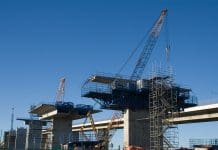UK construction and materials companies issued six profit warnings in the first half of 2018, with 17% of the sector putting out warnings, according to EY’s latest Profit Warnings Focus
Four companies issued a total of six profit warnings in the first six months of the year.
By the same point in 2017 there had been three profit warnings, which went on to hit seven for the whole year.
Problem contracts, such as the construction of waste-to-energy plants, have proved to be the most common factor provoking listed companies to dampen the expectations of investors.
EY construction leader Ian Marson said: “The last year has been one of growth, but also increased challenge and scrutiny, which has drawn attention to some of the sector’s long-standing structural weaknesses. With the outlook in question, it feels like a good time to take stock and think about how construction companies can improve resilience and meet the challenges that lie ahead.”
Outside of residential construction, growth is still patchy with a smaller number of major projects coming through from the public sector. There’s an increasing risk that rising levels of economic and political uncertainty leads commercial clients to defer decision making. Just one of six sector profit warnings in 2018 cited the adverse weather, but four cited delayed contracts and uncertainty dragging on demand. Margins remain under pressure.
The construction sector, with government assistance, is looking at ways to address ingrained structural issues, such as low levels of innovation and the skills shortage. Low productivity is a vital challenge for the sector to resolve if it is to break out of its low-margin bind.
Marson continued: “Construction sector growth is notoriously hard to assess at any point – but especially after such a cold and wet winter. We’ll need a few more months of data to know if this represents a trend and it’s important to note that outside of residential construction, parts of the sector are growing, but at a relatively moderate pace.”
He added that construction companies were still carrying significant overhead in anticipation of bidding and winning new work but this has been slow to materialise – especially from within the public sector.
Marson concluded: “Concerns over the efficacy of PFI, along with increased scrutiny have served to extend the bid process for public projects. Two years of political uncertainty has also diverted attention away from infrastructure planning and spending.
“Margins also continue to remain under pressure, with risks beginning to build in raw material and labour costs from increased geopolitical tensions.”













